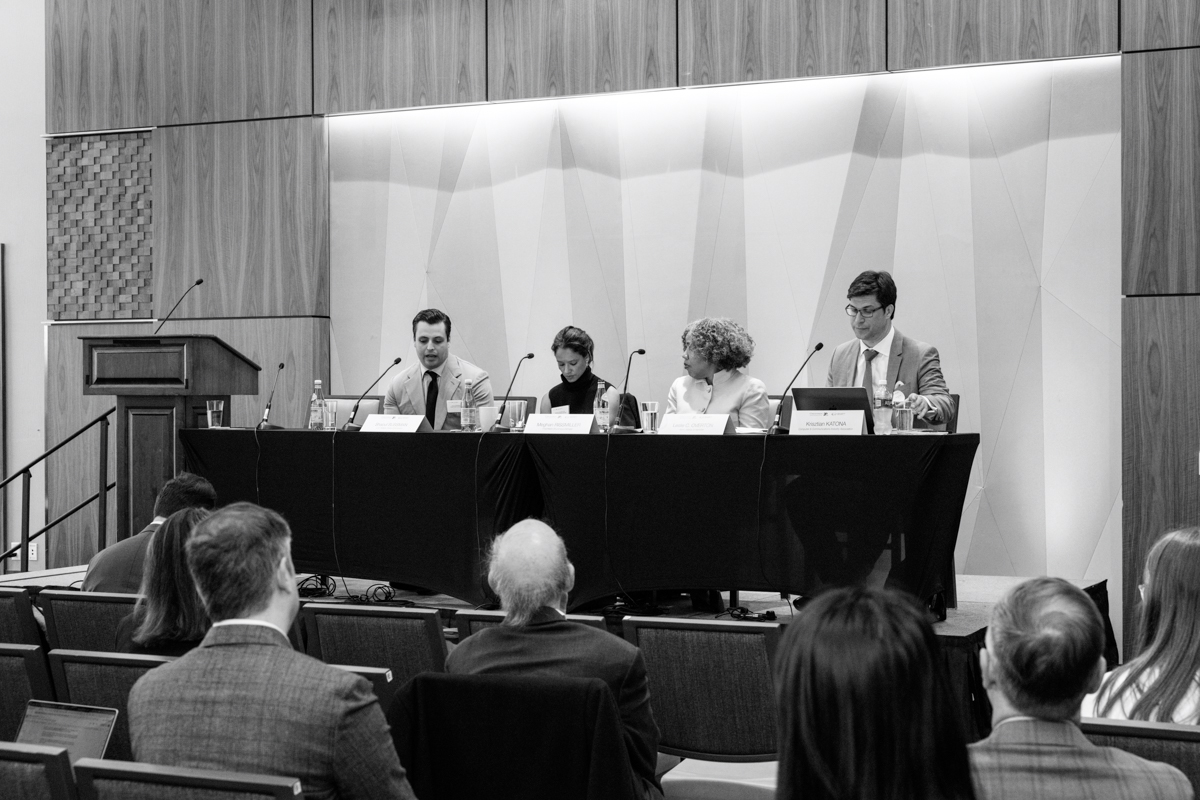Transparency at the Intersection of Music Licensing and Antitrust
At a hearing on Capitol Hill tomorrow, a Senate subcommittee will hear different perspectives on the degree to which competing music publishers should be permitted to coordinate licensing activities through performing rights organizations (“PROs”), such as ASCAP. Music publishers have expressed a desire for fewer antitrust constraints on their coordinated behavior, while users and distributors of music will call for greater transparency in the music marketplace.
The hearing occurs during an ongoing Justice Department review of the consent decrees that govern PROs.[FN1] Music publishers and PROs are presently subject to oversight to the extent that PROs coordinate behavior among publishers who ostensibly should compete with one another. Competitor coordination usually violates antitrust law, but because collective licensing also helps reduce the high transaction costs in music licensing, exceptions have been made for PROs. A PRO can offer a single performance rights license to a user or distributor for all the works controlled by multiple publishers – one-stop shopping for a huge number of works. But because one entity is nevertheless coordinating business transactions for a large group of companies that should be competing, antitrust oversight remains necessary.
If the Justice Department’s constraints on collusive action in the music publishing industry were relaxed, publishers could exert greater leverage against some users while still benefiting from coordinated PRO action with respect to others. Efforts in the music publishing industry to acquire this leverage thus far been checked by multiple federal judges,[FN2] with one observing that
“the evidence at trial revealed troubling coordination between Sony, UMPG, and ASCAP, which implicates a core antitrust concern underlying [the 2001 court judgment against ASCAP].”
In part because of this “troubling coordination,” users, distributors, and activists have called for greater transparency regarding who owns what rights (E.g., [1] [2] [3]). Although non-experts are often surprised to learn it, there is no official database to consult to determine who owns which copyrights. Unlike the PTO’s databases for patents and registered trademarks, there is no complete list or registry for copyrights. Since the late 20th century, U.S. law has granted exclusive rights to untold millions of works without requiring any record of who owns what.
In any opaque licensing environment, the lack of clarity about who owns rights can be exploited to extract higher royalties from users. That is, when it is unclear who owns what, the uncertainty can be “weaponized”: a rights-holder can refuse to disclose what it owns, but demand a license nonetheless, and threaten to sue if royalties are not paid. Thus, the offensive use of uncertainty in music licensing is similar to plaintiffs asserting ambiguous patents: the possessor of a right whose boundaries are indeterminate can make an offer that cannot be refused.
Licensing by online platforms is made even more difficult by the fact that consumers increasingly demand that digital services provide access to a broad spectrum of works on the market. This means millions of works; anything less and consumers go elsewhere, or they may download unlawfully what they cannot buy. What results is a high-transaction-costs environment. Negotiating the rights necessary to operate a comprehensive digital content platform requires a phalanx of IP lawyers. Payments that would otherwise go from listeners to songwriters instead go to lawyers. (This has the added side effect of creating high barriers to entry in the market for digital platforms, meaning that music publishers have fewer potential buyers than they would in a less complex environment.)
Difficulties in music licensing are one reason why copyright systems worldwide are undergoing review. High transaction costs result in other problems as well, such as orphan works, a subject on which the Copyright Office produced a lengthy report in 2006.
Recently issued reports by both the Patent and Trademark Office and the Copyright Office [1] [2] all reflect on problems flowing from low transparency and high transaction costs, but look principally to the marketplace for a solution. The problem, however, is that the very nature of transaction costs is to inhibit marketplace solutions. In fact, since Ronald Coase and other scholars helped to advance the understanding of transaction costs in the mid- to late-20th century, economists have arrived at a rare consensus on the fact that when transaction costs are high, marketplaces cannot produce socially optimal results. Hence the broad call for transparency: greater insight into who owns what would facilitate transactions, furthering commerce and competition in the music marketplace.
[FN1] The PROs ASCAP and BMI are subject to antitrust consent decrees [ASCAP] [BMI]; a smaller PRO called SESAC is not, but has been accused of antitrust violations.
[FN2] In re Petition of Pandora Media, Inc., (S.D.N.Y. Mar. 18, 2014); Broadcast Music, Inc. v. Pandora Media, Inc., (S.D.N.Y. Dec. 19, 2013) Radio Music License Committee, Inc. v. SESAC, Inc., (E.D. Pa. June 26, 2014); Meredith Corp. v. SESAC LLC, (S.D.N.Y. Mar. 3, 2014).








